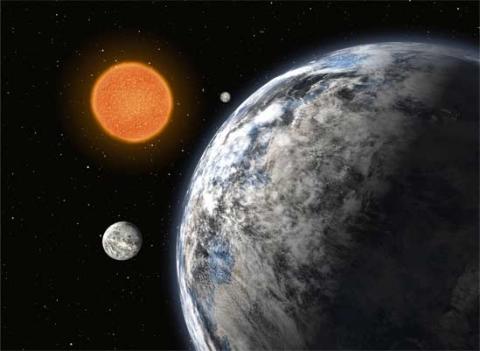Space: Wobbly stars

The European astronomers who first discovered a planet beyond our Solar System (just a dozen years ago) have now calculated that fully one-third of all nearby stars may have planets circling them that are not much bigger than our Earth.
Past experiments had indicated that maybe about seven in every hundred stars possessed planets, so this new estimate is sensational.Four years ago, the team led by Swiss astronomer Michel Mayor of the Geneva Observatory began to survey a group of about 400 stars within 100 light-years of Earth that had no obvious signs of a planet based on previous surveys. “It turns out that a large fraction of the stars that we had believed had no planets actually have planets, but of small mass,” said team member Didier Queloz.The next step was to closely analyse about 45 of the stars on their list, including HD 40307 - a sun-like star located 42 light-years away from us in the constellation Doradus, which is not visible from Ireland because it is in the southern sky.
Using the High-Accuracy Radial-Velocity Planet Searcher (HARPS), a telescope mounted atop La Scilla mountain in Chile, and operated by the European Southern Observatory, the astronomers looked for tiny changes in the colour of starlight that indicate the star is wobbling under the sway of an orbiting planet. The frequency and strength of the wobbles tells researchers the approximate mass of the planet, its distance from the star and the time it takes to complete an orbit.HARPS can identify changes in a star's motion as slight as two meters (six feet) per second, or about the speed of someone on a brisk walk, and the researchers were able to tease apart the signatures of multiple planets around HD 40307, work out their mass (4.2, 6.7 and 9.4 times that of Earth), and even calculate the time it takes each to orbit the star (4.3, 9.6 and 20.4 days, respectively) .“Clearly these planets are only the tip of the iceberg,” Michel Mayor told a conference in Nantes. “Does every single star harbour planets? We may not know the answer, but we are making progress. ”Mayor calls the latest planets that he has discovered “Super-Earths”.
These planets are orbiting too close to their star to be conducive to life as we know it (they are too hot), but their existence builds the case for smaller planets being common in the universe. Indeed, there may be many other planets that current instruments cannot yet detect since they orbit too far from their stars. The current batch of planets just discovered all orbit their stars in less than 50 days. As instruments improve, it should be possible to resolve Earth-sized planets that orbit as far from their stars as our Earth does, so that same sample of 400 stars might yield even more Earth-sized planets orbiting at greater distances than astronomers can currently detect. Irish astronomers are engaged in several surveys to identify extra-solar planets, however much high-profile research is conducted using the telescopes of the European Southern Observatory (ESO). Ireland remains the only country in western Europe that is not a member of ESO, which means that Irish researchers are the only astronomers without access by right to some of the world's most advanced scientific instruments.
